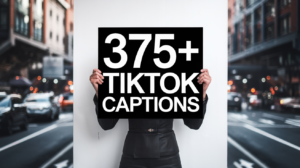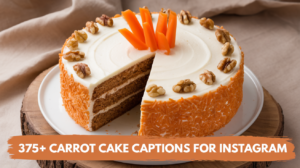In the fast-changing world of texting and online slang, the LMR meaning has caught the attention of social media users and Gen Z alike. Short for “Like My Recent,” this acronym is used widely on platforms such as Instagram, Snapchat, and TikTok. The phrase encourages friends or followers to show engagement by liking a recent post or photo, helping users boost visibility and interaction. Interestingly, some people also confuse LMR with deeper or unrelated interpretations—often referred to as its hiatus meaning—which adds another layer of curiosity to its online evolution. In this guide, we’ll explore everything about LMR, its usage in texting, its slang context, and why understanding it matters in 2025’s digital communication culture.
LMR Meaning in Text and Social Media
The most common and modern LMR meaning stands for “Like My Recent.” It’s often used when someone posts a new photo or video and wants friends to like or engage with it. For instance, if you get a message saying “LMR pls,” it simply means the sender is asking you to like their most recent post. This phrase has become a staple in Instagram culture, where engagement is everything. It’s casual, friendly, and part of the mutual interaction system that keeps social connections alive online.
How LMR is Used in Text Conversations
People use LMR casually in chats, stories, or comments to boost attention to their content. Common examples include:
- “Hey, LMR on Insta!”
- “LMR and I’ll return the favor.”
- “Just dropped a new pic, LMR!”
This quick, easy abbreviation reflects the reciprocal support culture that dominates today’s social apps. It’s also used to signal friendship or familiarity—showing that both people are comfortable interacting openly online.
The Hiatus Meaning of LMR
While “Like My Recent” is the most known definition, some users refer to LMR’s hiatus meaning to describe a temporary pause in communication or activity—especially in older chat forums or niche online spaces. In this sense, “hiatus” means a break or gap, and LMR can sometimes be misinterpreted as part of this context depending on tone or usage. However, in modern slang, the “hiatus” connection is rare and outdated, overshadowed by its dominant social media use.
LMR in the Context of Online Popularity
The LMR trend has grown with social media’s focus on likes and engagement metrics. Teens and influencers often use it to remind followers to interact with their latest posts. It’s not about vanity—it’s about visibility. Algorithms favor posts with immediate engagement, so saying “LMR” helps users gain quick traction. This small act of social reciprocity builds stronger online networks and boosts one’s digital reputation.
Why LMR Matters in Modern Communication
Understanding the meaning of LMR helps decode today’s social media behavior. It reflects how modern friendships blend with digital culture. When someone says “LMR,” they’re not just asking for a like—they’re expressing a subtle need for acknowledgment, presence, and mutual appreciation. It’s a friendly nudge that says, “I see you, now see me too.”
LMR and Its Connection to Engagement Culture
Social media thrives on engagement, and LMR is one of the simplest ways users maintain that connection. When people exchange likes, they’re essentially reinforcing a digital bond. This act builds small yet meaningful social circles online. The term also highlights how language keeps evolving to fit human needs for validation and visibility in the digital world.
Common Variations and Related Slang

LMR shares similarities with other internet abbreviations like:
- TBH – To Be Honest
- IDC – I Don’t Care
- FR – For Real
- SMH – Shaking My Head
- FYP – For You Page (TikTok)
These abbreviations, like LMR, make online interaction faster, more expressive, and culturally relevant. Each one has evolved to convey mood, context, or action without full sentences—showing how online slang adapts to user behavior.
Misunderstandings Around LMR
Despite its straightforward meaning, LMR can cause confusion among people unfamiliar with social media lingo. Some mistake it for romantic undertones or business-related phrases. Others may assume it’s related to gaming or professional terms. This highlights the importance of context—on Instagram or TikTok, it clearly means “Like My Recent,” but in a text conversation without context, it might need clarification.
Cultural Relevance of LMR in 2025
As of 2025, LMR continues to thrive, especially among younger generations who value instant engagement. It’s part of a larger trend of short, catchy communication that fits fast-paced online interaction. With the rise of AI-driven content, short codes like LMR still maintain their human touch—bridging emotional connection with digital convenience.
LMR and Its Psychological Implications
Psychologically, LMR represents the human need for validation and belonging. In digital spaces, a “like” equals attention. When someone asks for an LMR, they’re subconsciously seeking recognition. This doesn’t always imply insecurity—it’s part of a broader social feedback loop that shapes confidence and visibility online. Understanding this helps users stay aware of how they engage emotionally with technology.
LMR in Professional vs. Casual Contexts
In professional communication, using LMR would appear informal and out of place. However, in casual or influencer environments, it fits perfectly. The tone of the platform matters—a quick “LMR” on Instagram makes sense, but in a work-related chat, it’s better replaced with a polite request like, “Please check my latest post.” Recognizing this difference shows digital intelligence and adaptability.
How LMR Differs from Similar Slang
Unlike FYP or TBH, which focus on content discovery and honesty, LMR is about direct engagement. It’s a call-to-action for support, not just expression. Its clarity makes it one of the most widely used terms among content creators, influencers, and even casual users.
Why Understanding Slang Like LMR Is Important
Knowing the meaning of LMR helps bridge generational gaps in digital communication. Parents, teachers, and professionals can better understand how young people express themselves online. It’s not just slang—it’s part of the evolving language of connection, reflecting how modern relationships thrive through digital gestures.
The Evolution of LMR in Online Culture

Language is fluid, and acronyms like LMR prove it. Once confined to Instagram circles, it’s now used on TikTok, Snapchat, and even X (formerly Twitter). Each platform gives it a slightly different tone, but the core message remains—support and recognition. This evolution mirrors the ever-changing nature of internet culture, where trends adapt but the human need to connect never fades.
Conclusion
The LMR meaning may seem simple, but its cultural and emotional impact runs deep. It’s more than a three-letter abbreviation—it’s a modern expression of support, acknowledgment, and community. Whether used in casual chats or influencer campaigns, it captures the essence of how digital interaction has redefined friendship and engagement. In 2025, as online language continues to evolve, LMR remains a reminder that even small gestures of appreciation can keep human connection alive in a digital world.
FAQs
1. What does LMR mean in texting? LMR stands for “Like My Recent,” commonly used to ask someone to like a new social media post.
2. Does LMR have any other meanings? Occasionally, people mention its hiatus meaning, but that use is rare and not common in modern slang.
3. Where is LMR most often used? It’s primarily used on Instagram, Snapchat, and TikTok to increase engagement and visibility.
4. Is LMR considered rude or needy? Not at all. It’s typically seen as friendly and casual, part of mutual engagement culture online.5. Can LMR be used in professional communication? No, it’s best reserved for informal or social settings, as it’s slang specific to personal interaction.
















